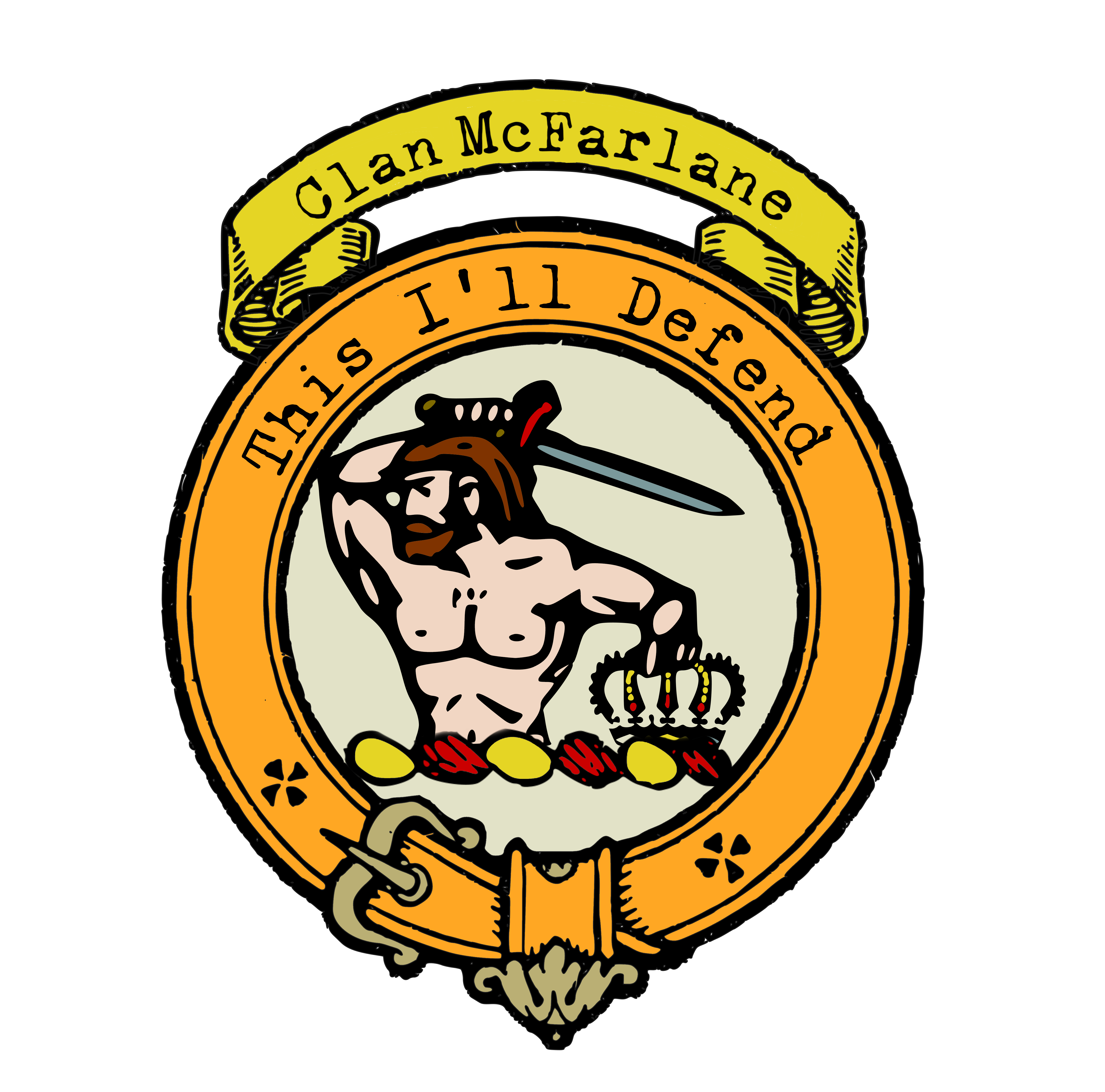Clan McFarlane
|
|
CREST: A demi savage brandishing in his dexter hand a broad sword Proper and pointing with his sinister to an Imperial Crown Or standing by him on the Wreath MOTTO: This I’ll defend TRANSLATION: N/A VARIATIONS: MacFarlane |
| The Mcfarlanes trace their ancestry back to Alwyn, Celtic Earl of Lennox, whose son, Gilchrist, was granted lands at Arrochar in the late 12th century. It was Gilchrist’s grandson, Malduin, who sheltered a young Robert the Bruce during his troubled times. This act of loyalty forged a bond between the Macfarlanes and the future king, setting the stage for their illustrious role in Scottish history.The Mcfarlanes displayed their martial prowess at the Battle of Bannockburn in 1314, fighting alongside Robert the Bruce to secure a resounding victory against the English forces. They continued to support the cause of the Stewarts, even when the crown overlooked their valid claim to the earldom of Lennox. Andrew Macfarlane, the tenth chief, solidified a new alliance by marrying a daughter of Lord Darnley, the recipient of the coveted title. | |
 |
|
| Purchase @ Redbubble Purchase @ Amazon.com Purchase @ Amazon.co.uk |
|
| Throughout the 15th and 16th centuries, the Mcfarlanes stood steadfast beside the Earls of Lennox, participating in numerous conflicts. They fought bravely at Flodden in 1513, where the eleventh chief and many clansmen lost their lives. The Mcfarlanes also played a significant role in the defense of Scotland against English invasions, notably at the Battle of Pinkie in 1547, where the thirteenth chief, Duncan, and his brother made the ultimate sacrifice.
The Mcfarlanes faced tumultuous times during the reign of Mary, Queen of Scots. After the murder of Lord Darnley, they opposed the queen and showcased their gallantry at the Battle of Langside in 1568. Andrew, the fourteenth chief, emerged as a heroic figure, capturing three of the queen’s standards and earning the personal praise of the Regent Moray. Their steadfast loyalty to the Crown and the infant James VI is commemorated in the clan’s crest and motto. As the political landscape shifted, the Mcfarlanes aligned themselves with different factions. They supported the Marquess of Montrose and fought valiantly at the Battle of Inverlochy in 1645, during the turbulent times of the English Civil War. However, the clan suffered when Oliver Cromwell’s forces conquered Scotland, resulting in the destruction of their ancestral seat at Inveruglas. The Decline and Legacy: Despite their attachment to the Stuart cause, the Macfarlanes could not support James VII and instead declared for Queen Mary and her husband, William of Orange, in the Glorious Revolution of 1688. The clan remained relatively inactive during the Jacobite risings of 1715 and 1745. The twentieth chief, Walter Macfarlane, a renowned scholar and antiquary, spent most of his life in Edinburgh, perhaps explaining the clan’s limited involvement in these conflicts. After Walter’s death in 1767, the clan lands at Arrochar were sold, marking the end of an era. The direct male line of chiefs came to a close in 1886, leaving the Macfarlane clan without a recognized chief to this day. However, despite the challenges and changes faced over the centuries, the legacy of Clan Mcfarlane continues to endure. |
|
Citations:
|
|

